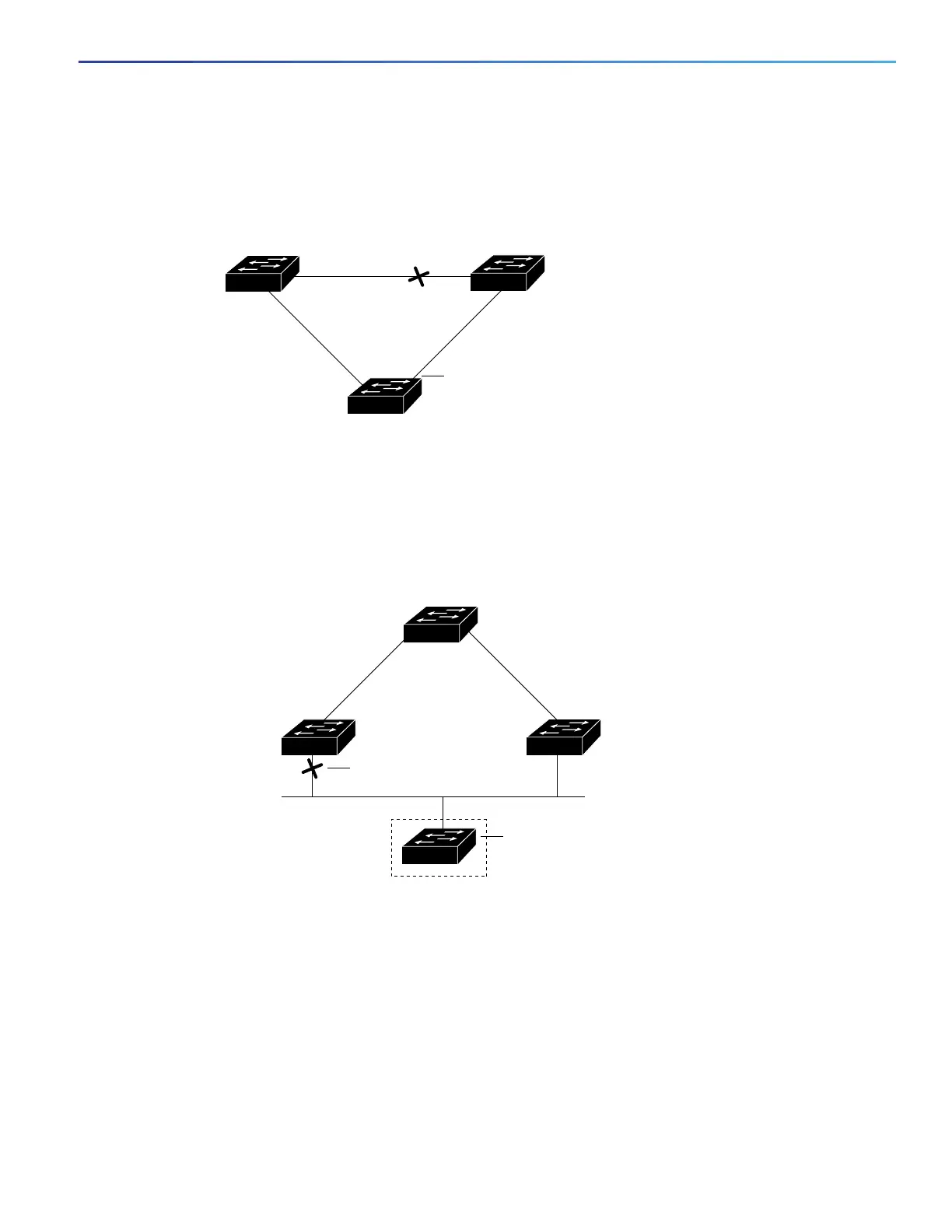359
Configuring Optional Spanning-Tree Features
Information About Configuring the Optional Spanning-Tree Features
if the default Forward Delay time of 15 seconds is set. Figure 49 on page 359 shows how BackboneFast reconfigures
the topology to account for the failure of link L1.
Figure 49 BackboneFast Example After Indirect Link Failure
If a new switch is introduced into a shared-medium topology as shown in Figure 50 on page 359, BackboneFast is not
activated because the inferior BPDUs did not come from the recognized designated switch (Switch B). The new switch
begins sending inferior BPDUs that indicate it is the root switch. However, the other switches ignore these inferior BPDUs,
and the new switch learns that Switch B is the designated switch to Switch A, the root switch.
Figure 50 Adding a Switch in a Shared-Medium Topology
Enabling BackboneFast
You can enable BackboneFast to detect indirect link failures and to start the spanning-tree reconfiguration sooner.
Note: If you use BackboneFast, you must enable it on all switches in the network. BackboneFast is not supported on
Token Ring VLANs. This feature is supported for use with third-party switches.
L1
L2 L3
Switch C
Switch A
(Root)
Switch B
Link failure
44964
BackboneFast changes port
through listening and learning
states to forwarding state.
Switch A
(Root)
Switch C
Switch B
(Designated bridge)
Added switch
44965
Blocked port

